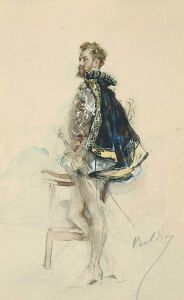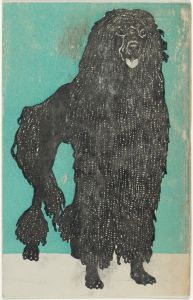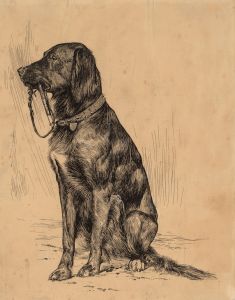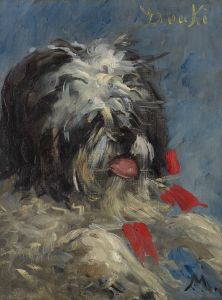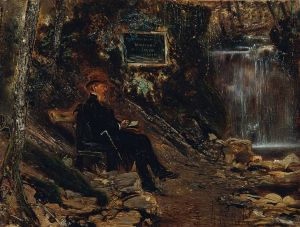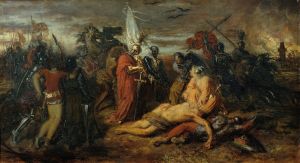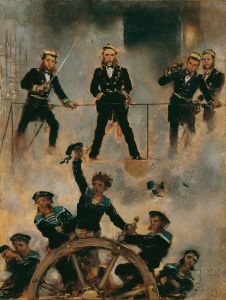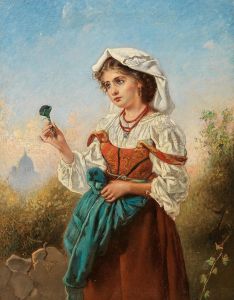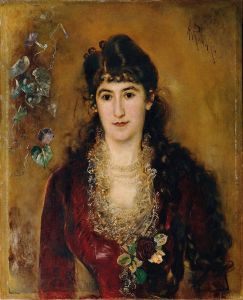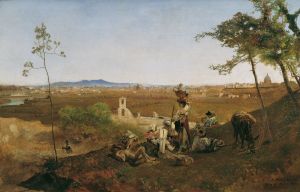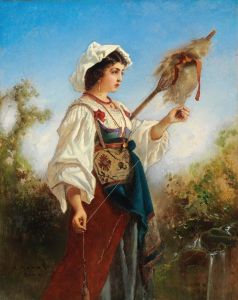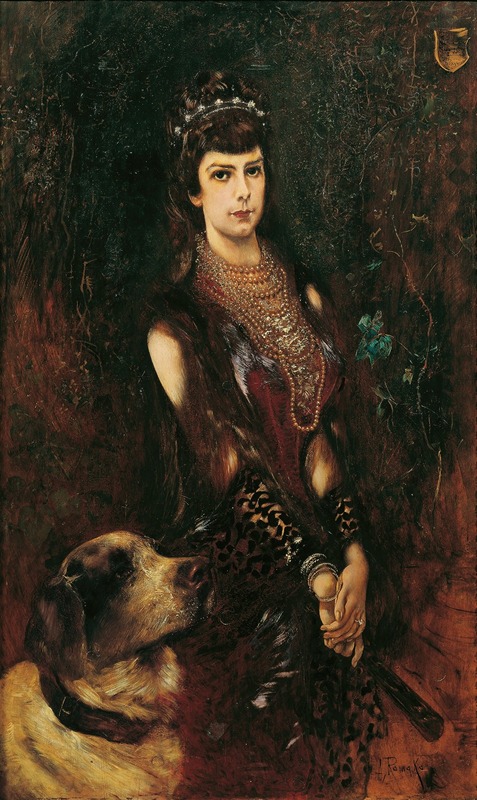
Kaiserin Elisabeth mit Bernhardinerhund
A hand-painted replica of Anton Romako’s masterpiece Kaiserin Elisabeth mit Bernhardinerhund, meticulously crafted by professional artists to capture the true essence of the original. Each piece is created with museum-quality canvas and rare mineral pigments, carefully painted by experienced artists with delicate brushstrokes and rich, layered colors to perfectly recreate the texture of the original artwork. Unlike machine-printed reproductions, this hand-painted version brings the painting to life, infused with the artist’s emotions and skill in every stroke. Whether for personal collection or home decoration, it instantly elevates the artistic atmosphere of any space.
Anton Romako was an Austrian painter known for his unique style and contribution to 19th-century art. One of his notable works is "Kaiserin Elisabeth mit Bernhardinerhund," which translates to "Empress Elisabeth with Saint Bernard Dog." This painting features Empress Elisabeth of Austria, also known as Sisi, who was one of the most famous and beloved figures in Austrian history.
Empress Elisabeth was the wife of Emperor Franz Joseph I and became an iconic figure due to her beauty, charisma, and tragic life story. She was known for her love of travel, poetry, and her dedication to maintaining her beauty and slim figure, which was quite unconventional for her time. Her life was marked by personal struggles and a sense of restlessness, which often led her to seek solace in travel and solitude.
Anton Romako, the artist, was born in Atzgersdorf, near Vienna, in 1832. He studied at the Academy of Fine Arts in Vienna and later in Munich and Rome. Romako's style was distinct from his contemporaries, as he often employed a more expressive and less polished technique. His work did not gain significant recognition during his lifetime, but he has since been appreciated for his innovative approach and emotional depth.
The painting "Kaiserin Elisabeth mit Bernhardinerhund" captures a moment of intimacy and tranquility. Empress Elisabeth is depicted with a Saint Bernard dog, a breed known for its gentle nature and association with the Swiss Alps. The inclusion of the dog in the painting may symbolize loyalty and companionship, qualities that Elisabeth valued in her often isolated life.
Romako's portrayal of Elisabeth is notable for its departure from the more formal and idealized representations commonly seen in royal portraiture of the time. Instead, he presents a more personal and introspective image of the Empress, reflecting perhaps her inner world and the complexities of her character. The painting's composition and use of color contribute to its emotional impact, drawing the viewer into the serene yet poignant atmosphere.
While the painting itself is a significant work, it also offers insight into the life and personality of Empress Elisabeth. Her relationship with animals, particularly dogs, was well-documented, and they were among her few sources of comfort and joy. This aspect of her life is sensitively captured by Romako, adding depth to the viewer's understanding of the Empress beyond her public persona.
"Kaiserin Elisabeth mit Bernhardinerhund" is an example of how art can provide a window into historical figures' private lives, offering a more nuanced perspective than traditional historical accounts. Romako's work, though not widely celebrated during his lifetime, has gained appreciation for its emotional resonance and its ability to convey the complexities of human experience.
In summary, Anton Romako's "Kaiserin Elisabeth mit Bernhardinerhund" is a poignant portrayal of Empress Elisabeth of Austria, capturing her in a moment of quiet reflection with a beloved companion. The painting stands as a testament to Romako's artistic vision and his ability to convey the depth of his subjects' inner lives.





